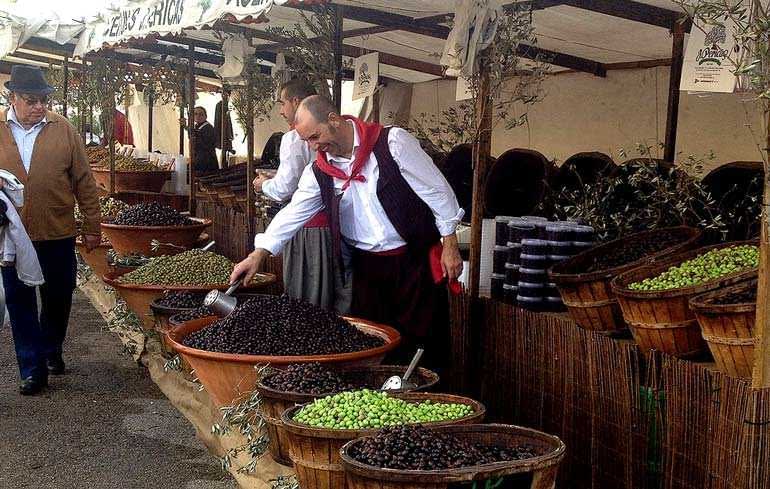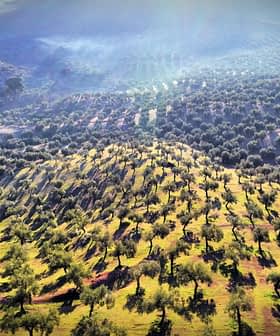
Wild olive trees provide the rootstock and a native olive variety the fruit which becomes “Aceituna de Mallorca” — the table olives from the Spanish island of Majorca just added to the list of protected agri-food products in the European Union.
The registration as a protected designation of origin (PDO) actually covers three variants of the same small Majorcan olive: whole green, bruised green and natural black table olives.
Among their claimed features are a ‘floating stone’, which is a pit only loosely attached to the olive flesh, a characteristic bitterness, “due to the high polyphenol content,” and a fat content with a melting point under 39 °C (102 °F), said to deliver a creamy mouth feel “prized by consumers”.
Expertise in grafting, harvesting by hand
But it’s the causal links between an area and the quality or characteristics of a product that are key for PDO listing and in this case the supporting documents say the main factors are:
- Climate and soil: the combination of a Mediterranean climate and limey soil endow the olives with “a high level of polyphenols, which gives them the bitter taste…so typical of the Majorcan olive.”
- Genetic characteristics: the island’s hardy, rain-fed wild olive trees (Olea europea var. sylvestris) have long provided the rootstock onto which the native Majorcan olive variety — known for poor root growth — is grafted. Interestingly, though different to the variety of the same name on mainland Spain, this indigenous variety is called ‘empeltre’ after the Catalan word for ‘graft’.
- Agronomic resources: the olives are picked by hand and in stages — before winter for the whole green olives and bruised green olives, and after winter for the natural black ones.
- Distinctive production method: this includes the traditional flavoring of the bruised green olives with fennel and chili peppers from the island, and the addition of Majorcan olive oil to the natural black olives, increasing their characteristic “unctuousness”.
Consumers willing to pay more
Table olives have long featured in the gastronomy of not just Majorca but other Balearic islands. An 1871 book said they and bread accompanied every meal and that the average rural family salted about 200kg a year for their own use.
The importance of olives there is also reflected in old songs and sayings, including one along the lines of “For the olive and the acorn, they help harvest both the big and small” — a reference to the whole family having to pitch in. Other sources refer to sizeable exports of table olives from Majorca between the eighteenth and early nineteenth centuries, such as to the West Indies and South America.
A document published by the Spanish government said studies show many Majorcans still consume their local table olives as a snack or with the typical tomato-rubbed bread with olive oil. It also said an indication of their fondness for the local variety is that a 2011 study found the retail price for Majorcan table olives was 42 percent higher than the average price for all table olives.








